Sarajevo, as the capital of Bosnia and Herzegovina, three times has been the center of world attention in the past. The first time the Austro-Hungarian Crown Prince Franz Ferdinand was assassinated, the second time during the 14th Winter Olympics, and the third time during the siege of Sarajevo during the 90-those years of the last century.
However, Sarajevo has much more to offer than these three events. This city, and especially its old part, is often called “European Jerusalem” due to the presence of different nations and cultures, located in a relatively small area. Sarajevo cultures are astonishing which you will see while walking throughout Sarajevo. This city gives you a sense of time travel, from the Ottoman period in one step you are transitioning to the Austro-Hungarian period.
The further you go, the more modern Sarajevo becomes, and therefore you can conclude how different cultures have left an indelible mark in the existence of this city.

The two regions have their differences and for much of their history have been united under one government. The land has often felt the influences of stronger world powers that have scrambled for control over it. These influences have helped create Bosnia and Herzegovina’s characteristically rich ethnic and religious mix.
This small space captures a glance of four empires: Roman, Byzantine, Ottoman, and Austro-Hungarian, two kingdoms: Bosnian and Yugoslav. Three world monotheistic religions: Christianity (Orthodoxy and Catholicism), Islam and Judaism, and different architectural styles.
Sarajevo cultures through centuries
Before the Ottomans came to Bosnia, in the area where today’s Sarajevo, more precisely the Old Town, already existed, however, it was no larger than a square, let alone a larger city. The area where Sarajevo was built, in that period, looked somewhat different.
There was a medieval village Bordac on today’s location of Bentbaša Baščaršija around which there was land that belonged to the inhabitants of the village. Several roads passed through the village, including the main road behind Sarajevo fields through Trgovište to Baščaršija. There was a crossroads on the main bazaar from the Middle Ages, and the main road, which is identical with today’s Titova Street, separated in several directions towards several villages.
The mentioned places are mostly located in the area which was often called Old Varoš (Stara Varoš), especially in Isa bey’s vakufnama, a document related to the founding of the city. This Old Varoš collapsed and Sarajevo was founded. Saray-ovasi was the original name for Sarajevo, and the Ottomans called the entire area of Vrhbosna that way. By omitting the last part words and by adding a suffix – the name Sarajevo came to exist.
A big part of Sarajevo cultures was the Ottoman rule
The Ottomans invested a lot in waterworks, fountains, and Sebilj during the construction and urbanization. Sebilj, in the 21st century, is one of the main symbols of the city of Sarajevo, and the one at Baščaršija is the only one that now Sarajevo has. The word Sebilj (sebil) itself is of Arabic origin and has several meanings, such as a road, a building made on the road, in which passers-by can find water.
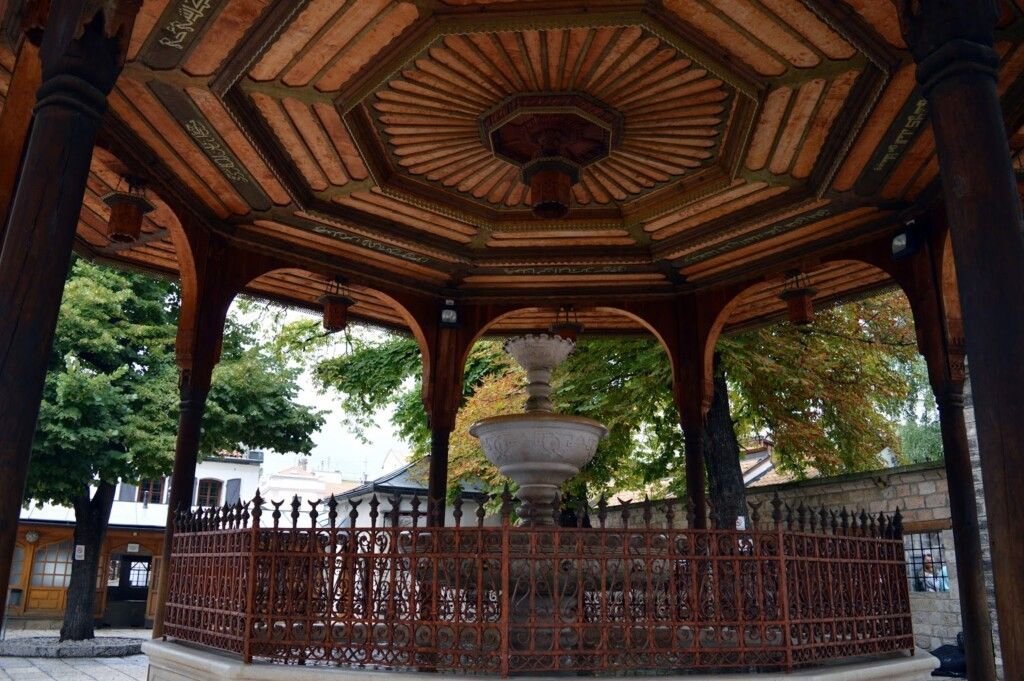
During the Ottoman rule, Sebilj did not look as complete as it does today, as there was a person in charge of it pouring water on passers-by who are thirsty. There is a written record that states, Ottoman built over 300 sebiljs, mostly in bazaars and markets. These sebiljis were destroyed in a fire in the year 1697., and in Sarajevo, there were no more sebilj until 1167, when sebilj was built in Baščaršija, 5 meters lower than today. According to one legend, one who drinks water from a sebilja or fountain will fall in love and stay in Sarajevo.

What contributed to the urbanization of Sarajevo, especially the old part of the city, is the waqfs, more precisely Gazi Husrev-beg’s waqf. Gazi Husrev-beg’s mosque is still one of the most beautiful symbols of this endowment, and it has preserved a tradition of almost 500 years. It is not known exactly when its construction began but is not known to have been completed in 1531.

Across from the magnificent mosque, one can also see the Gazi Husrev-beg madrasa (high school) with the library as part of his waqf. The madrasa was built in memory of his mother Seldžuka, so one period was also called Seldžukija. After the madrasa was covered with lead, and it got the name Kuršumlija.
Today, Kuršumlija is used as a museum, and next to it is another building madrasa with a boarding school which is still in use today and is classified as a waqf. Next to the madrasa in the waqf, Gazi Husrev-beg also includes Imaret, Caravanserai, which today bears the name Morića han, bezistani, and during the Ottoman period, even the water supply system was financed from the endowment of Gazi Husrev-bey.
Sarajevo cultures would not be the same without Jewish legacy
There is also a Jewish temple near Gazi Husrev-beg’s waqf. Namely, in Sarajevo, two Jewish groups exist the Sephardim and the Ashkenazi. The Sephardim of 1882 have their own statute, a The Ashkenazi have had it since 1883. Sarajevo is also the seat of the Sephardic and Ashkenazi Jews in Bosnia and Herzegovina.
There were two Sephardic temples in the Great Court, but one burned down in a fire in 1879 and was rebuilt in 1881. After the end of the Nazi occupation of Sarajevo, in 1941, the temple was looted and demolished, and at the end of World War II, it served as a warehouse.

In 1957, a thorough reconstruction of the building was carried out in order to obtain the old appearance. Later on, the temple was turned into the Jewish Museum of Bosnia and Herzegovina. At the beginning of 21. century was declared a National Monument of Bosnia and Herzegovina.
Christian legacy speaks a lot about Sarajevo cultures
Archbishop Josip Stadler worked in Sarajevo during the Austro-Hungarian administration, which sought primarily to regulate the church hierarchy, and then he advocated the construction of Catholic buildings. It was built in the period from 1882 to 1889 today’s Cathedral of the Heart of Jesus, which is also a tabled church. This building with two towers, done in the Gothic style is the work of the architect Josip Vancaš, who found his inspiration in the cathedrals of Notre Dame (Paris) and Teyn (Prague).
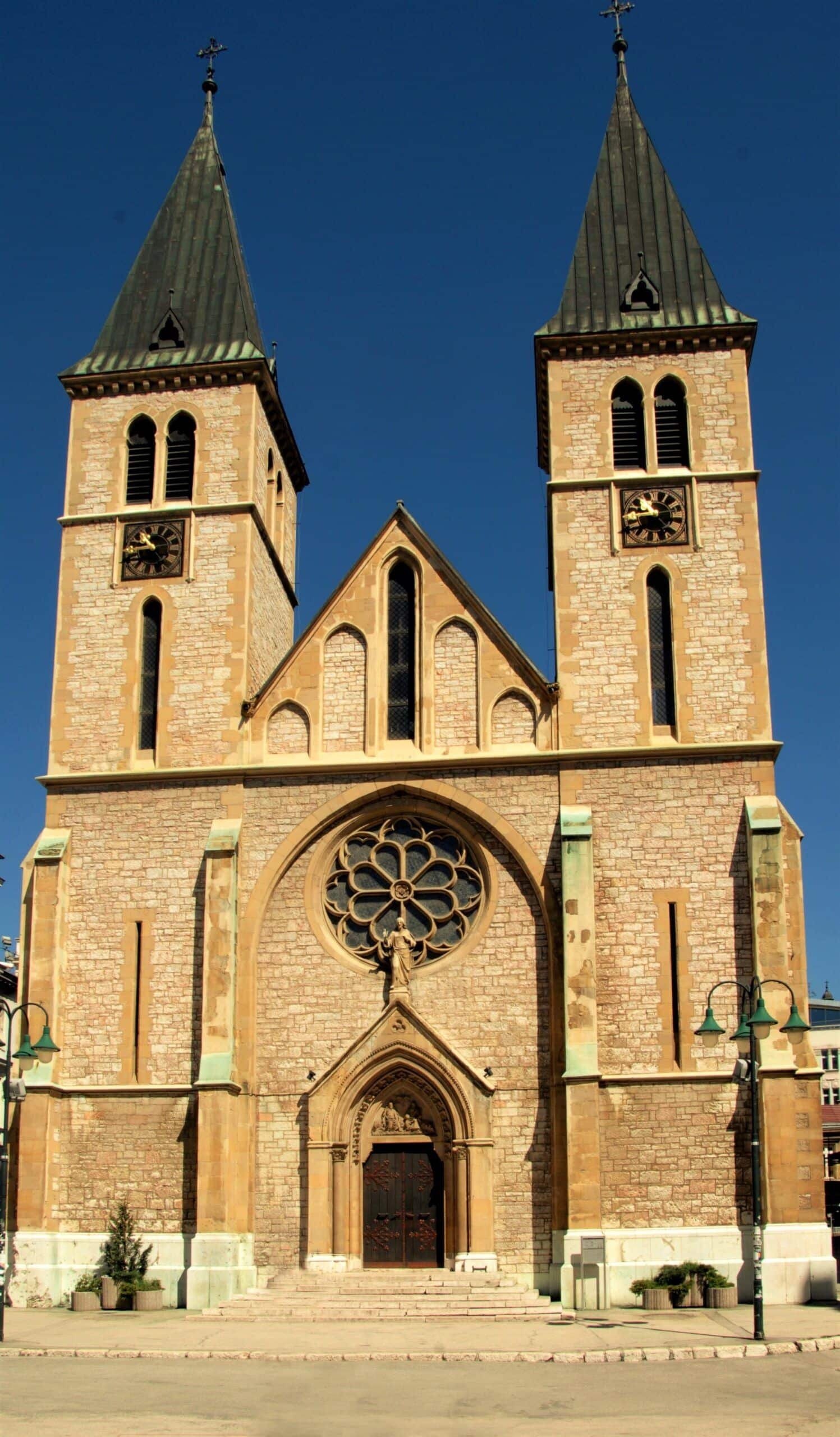
However, it can be said that it is the Sarajevo Cathedral very authentic which fits extremely nicely into its surroundings as a unique building. The interior of this cathedral is richly decorated. The frescoes were taken care of by the famous Italian-German painter Alexander Maximilian Seitz.
It is interesting that it was placed in front of this cathedral monument by Pope John Paul II, who was a great friend of Sarajevo and its people, and even visited Sarajevo. Not only was he visiting, but he was one of the first religious leaders who visited Sarajevo in 1997 after the end of the war in the 1990s.
Orthodox legacy adds to the uniqueness of Sarajevo cultures
Another of the places of worship that is in the immediate vicinity of the already mentioned three places of worship eat the Old Orthodox Church. When it comes to this church, the year of its founding is a bit problematic, since some claim that it existed before the arrival of the Ottomans.

The oldest Ottoman source to speak about Sarajevo is Isa-bey’s vakufnama from 1462. The church is not mentioned in it, therefore it probably did not exist at that time. The museum of the Old Serbian Orthodox church in Sarajevo has over 300 Ottoman documents, mostly from the XVIII and XIX centuries. Only four documents are dated to the first half of the seventeenth century.
Austro-Hungarian rule – last big impact on Sarajevo cultures
One of the most recognizable buildings in Sarajevo, besides Sebilj, is the City Hall- Vijećnica. Looking at this magnificent building, one could conclude from the appearance and composition of the colors that it is originated during the Ottoman rule, however, this is not true.
Namely, the City Hall was built during the Austro-Hungarian administration. After the arrival of the Austro-Hungarians in Sarajevo, the formation was ordered The city government, which until 1881 was housed in a building on the left bank of the Miljacka.
Karl Paržik was the first architect to be trusted to build and it is interesting that he is his project was stationed on the other side of Miljacka, not where today’s City Hall is. Minister B. Kallay himself had objections and his project was entrusted to another architect Alexander Wittek, famous for studying in Cairo and drawing his inspiration from Islamic architecture.
The town hall was built in the pseudo-Moorish style and is the main inspiration had the mosque and madrasa of Hassan II of Cairo. The base of the building has the shape of a right triangle, to which the tops are slightly truncated. On the side, there are towers divided at the ends, while in the middle there is a dome.
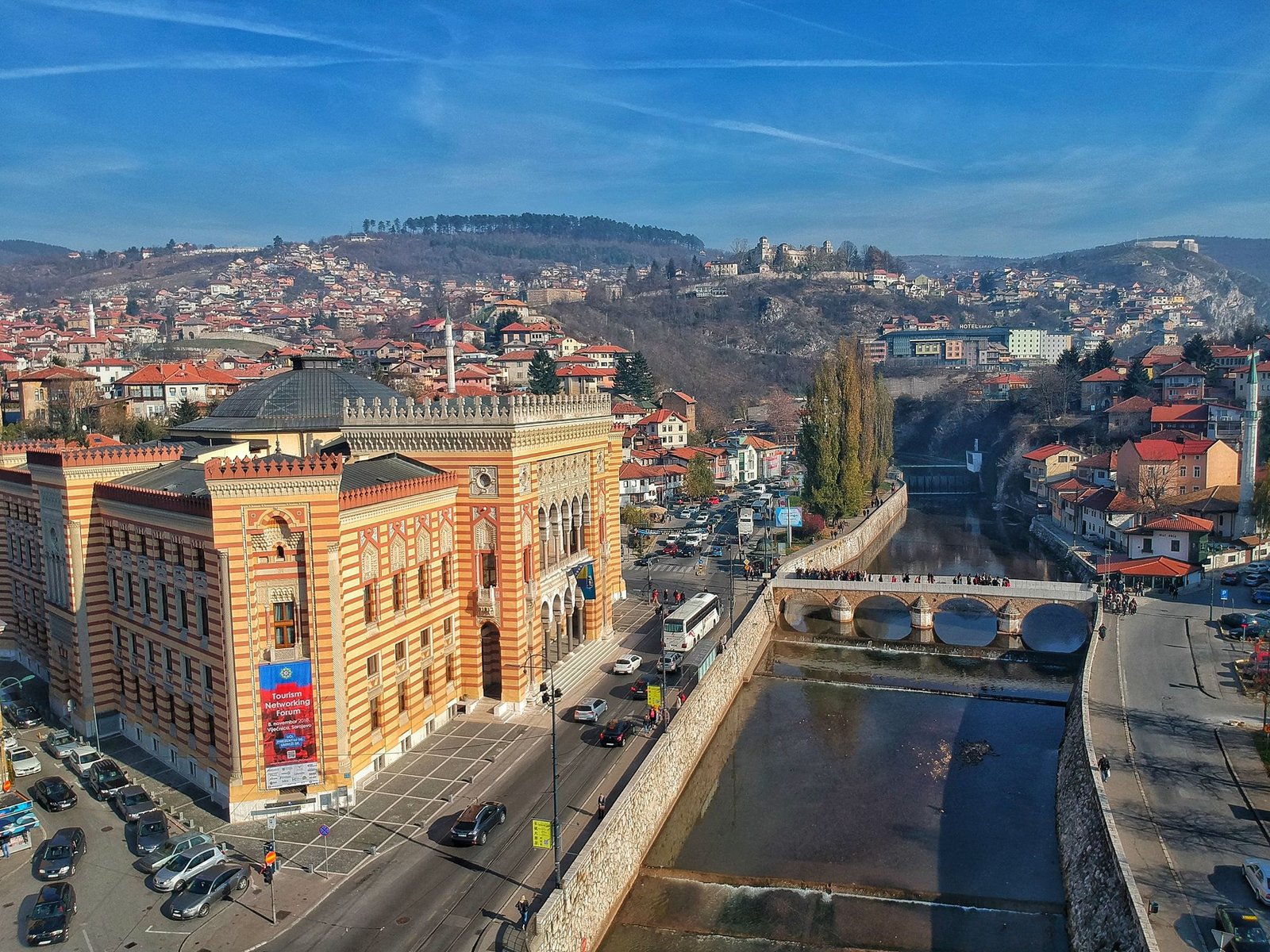
Vijećnica was ceremoniously opened on April 20, 1896. This building is in one period it also served as a library, but after it burned down in 1992, it was unrestored for a long time, since the government was procrastinating with the renewal. It was finally rebuilt to look like before, rebuilt, and confirmed symbolically in 2014 on the 100th anniversary of Franz Ferdinand’s assassination. Now again has the function of City Hall.
What’s very characteristic of the old part of the city is precisely this proximity to religious buildings, but also the cultural aspect that is indispensable here. Sarajevo has always been and will be a multicultural and multiethnic environment. One of the locations that are just witnessing this is a small symbol near the Jewish temple marked E (East) and W (West).

On the ground instead of the tiles that pave the street, you can clearly see the inscription Sarajevo – Meeting of Cultures. This indicates the specific geographical position of Sarajevo, but also of Bosnia and Herzegovina, which for centuries was just the border and the border between east and west.
Sarajevo cultures and its rich history
As I said in the beginning, three times during the 20th century Sarajevo was the center of the world. The first time was in the year 1914 when the assassination of Archduke Franz Ferdinand took place in Sarajevo. Tour in Sarajevo offers to explore sites of historical significance and to find out if the assassin, Gavrilo Princip, is a hero or villain more than 100 years later.

The second time the Bosnian capital reached the world’s headlines was in the year 1984. This time Sarajevo hosted the 14th Winter Olympic Games. Tours in Sarajevo let you experience the spirit of the Olympics and flashback to the 1980s. Visit Sarajevo and find out why it has been declared as the best host of the Winter Olympic Games of all time.
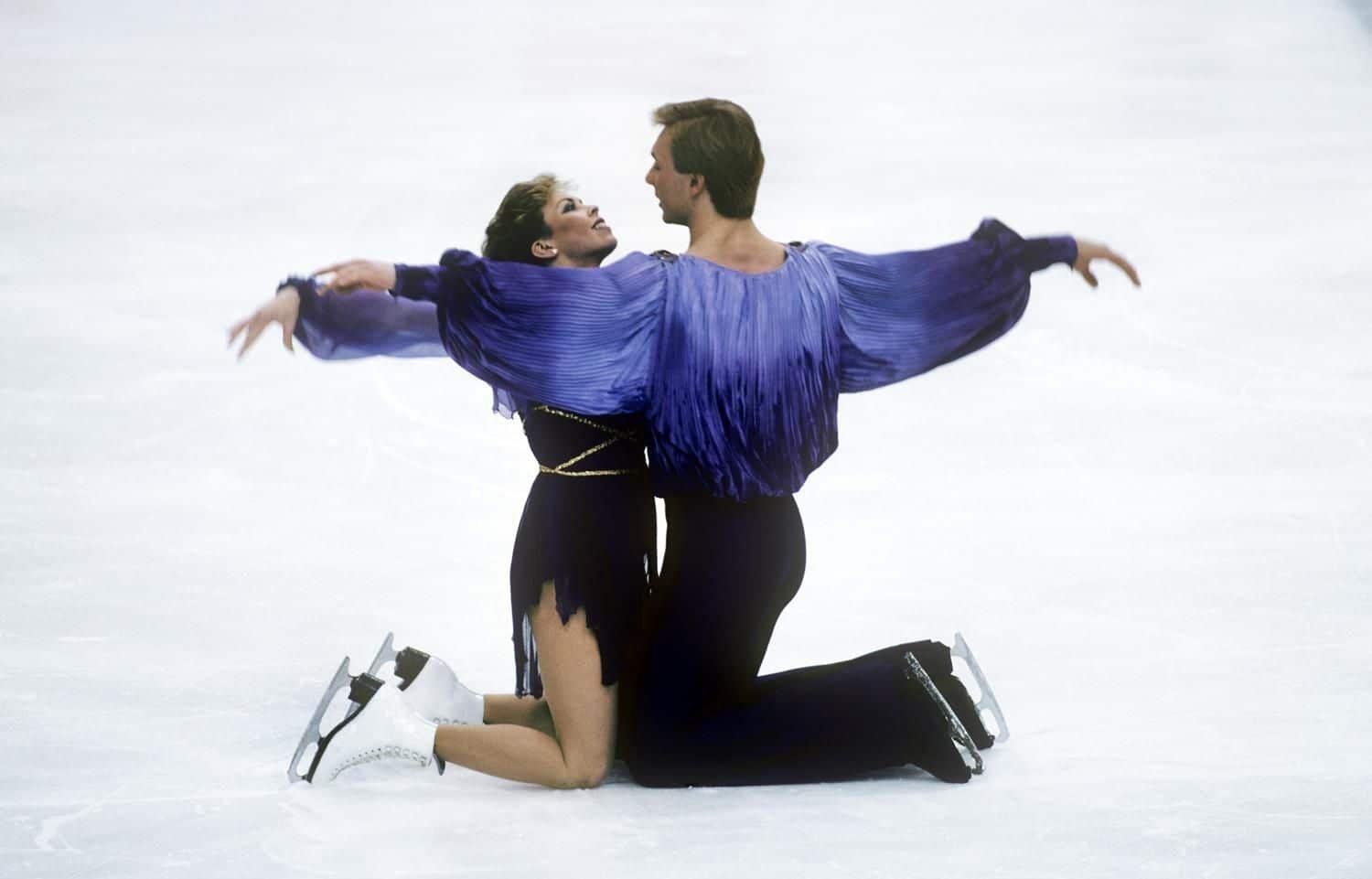
Just eight years later Sarajevo became a city under the longest siege in the modern history of Europe. For the third time was the center of the whole world. The aggressors used force and weapons to destroy everything in the city, even the Olympic sites. But the spirit of the city has remained alive and is here again. Despite the dark days of the past, Bosnia and Herzegovina offer many beautiful, unforgettable, and unique experiences and it is known worldwide for its hospitality.
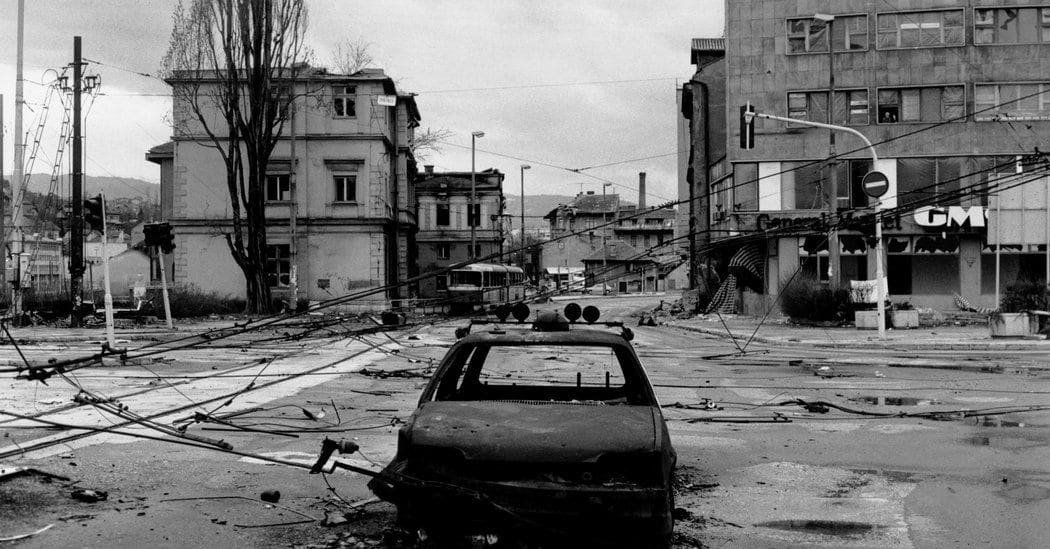
If you wish to explore Sarajevo, the best recommendation would be to take one of the Sarajevo tours or even perhaps Free Walking Tour. When seeing these magnificent buildings, your experience is amplified by the great tales our guides can offer you.

Hopefully, after reading this story you learned something new about Sarajevo cultures, and Sarajevo as a city. We truly believe this is a unique city in Europe and has a lot to offer. Now when you meet Sarajevo history through our Sarajevo cultures breakdown it is time for you to meet us. We are waiting for you with our Free walking tour or any other tour you choose.
